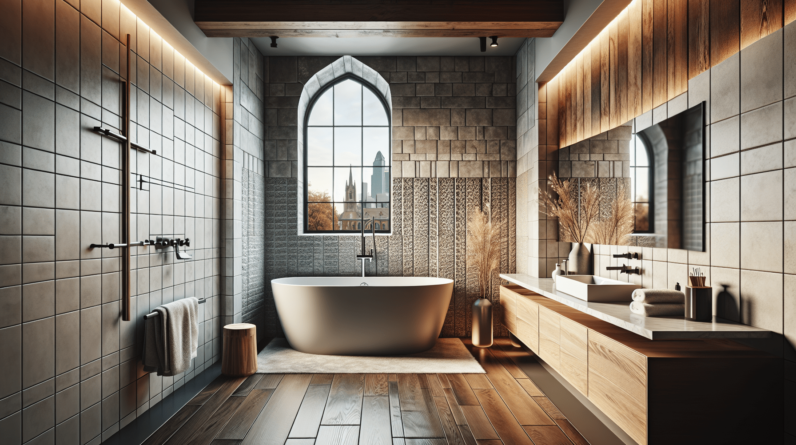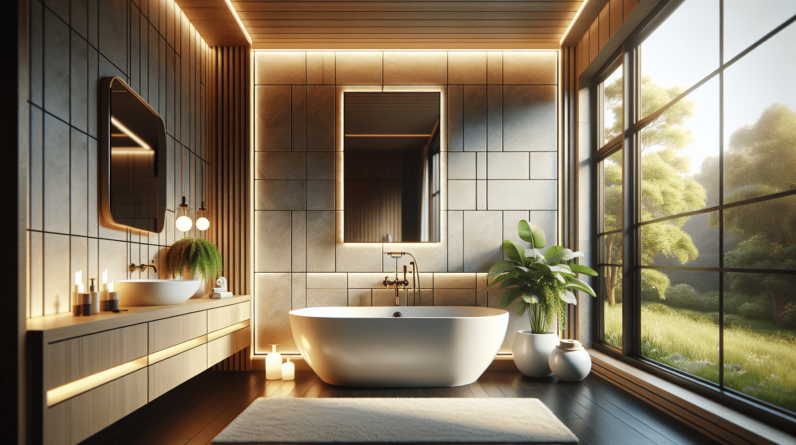

Have you ever thought about transforming your bathroom into a space that feels both functional and stylish? A well-executed bathroom remodel can significantly enhance your daily routine and even increase your home’s value. Let’s take a closer look at how you can take on this project yourself, ensuring that you’re both cost-effective and creative in the process.
Understanding the Basics of Bathroom Remodeling
Before you start tearing down tiles or picking out fixtures, it’s essential to understand the fundamentals of bathroom remodeling. This space often requires more planning and consideration than any other room in your home. It’s not just about aesthetics; you also need to consider plumbing, electrical work, and moisture control.
Setting a Budget
The first step in any DIY project is setting a budget. A bathroom remodel can range anywhere from a few hundred to several thousand dollars depending on the scale of the changes you want to make.
| Expense Type | Estimated Cost Range |
|---|---|
| Fixtures (toilet, sink) | $100 – $1,500+ |
| Vanity | $200 – $2,000+ |
| Flooring | $1 – $20/sq ft |
| Tiles | $1 – $10/sq ft |
| Plumbing & Electric Work | $500 – $3,000+ |
Understanding where you want to spend and where you can save will help you make smart decisions during the remodel.
Planning Your Design
Think about what you want from your bathroom. Is it a spa-like retreat? Or is it a functional space for the family? Make a list of must-have elements and a few nice-to-haves. This list will guide your design and help keep your budget in check.
Essential Tools and Materials
Gathering your tools and materials is crucial before you get started. Here’s a list to consider:
Tools
- Tape measure: For accurate measurements.
- Utility knife: Useful for cutting through various materials.
- Screwdrivers: A set of Phillips and flat-head options will serve you well.
- Hammer: For driving nails and pulling out existing fixtures.
- Level: To ensure that everything is aligned perfectly.
- Drill: For making holes or driving screws efficiently.
Materials
- Plumbing fixtures: Choose a toilet, sink, and faucet that match your style.
- Tile: Think about the color and material that will complement the space.
- Paint: If you’re updating your walls, pick a moisture-resistant paint.
- Vanity: Select one that fits your space and storage needs.

Demolition: The First Step
Once you have your budget and design in mind, it’s time for demolition. This part can be both exciting and daunting. Here are a few tips to keep in mind:
Safety First
Before starting, make sure to turn off the water supply and any electricity in the bathroom. Equip yourself with safety gear like gloves, goggles, and a dust mask. Protect your floors and remaining furniture with drop cloths.
Removing Fixtures
Begin with smaller fixtures like the sink and toilet. Then move on to larger items such as the bathtub or old cabinets. Always check for hidden screws or nails, and be prepared for some resistance.
Plumbing and Electrical Considerations
If your remodel involves moving fixtures, you’ll need to understand plumbing and electrical systems. Here are some key points to consider:
Plumbing Tasks
If you’re moving the toilet or sink, you’ll need to re-route the plumbing. This can be complex, especially with waste lines. If you’re not comfortable, it may be best to consult a professional.
Electrical Work
Ensure that any new electrical work, such as installing new lighting, complies with local codes. If you’re not skilled in this area, hiring an electrician is advisable. It’s essential for safety and long-term functionality.

Designing the Layout
Once the demolition is complete and any necessary plumbing or electrical work is done, it’s time to focus on layout. A well-planned layout can maximize space and improve functionality.
Space Utilization
Consider how each fixture impacts the flow of movement in the bathroom. Is there enough room between the sink and shower? Are you able to open the cabinet doors without obstruction?
Zones
Think about dividing areas for different activities. For instance, a makeup station could be near the sink, while the toilet area could be more private. This will make the bathroom more enjoyable for everyone who uses it.
Choosing Finishes and Fixtures
With the layout finalized, selecting finishes and fixtures is one of the most fun parts of your remodel. Here’s how to choose wisely:
The Right Fixtures
When selecting fixtures, combine functionality with style. Look for water-efficient toilets and faucets to save on your water bill. You’ll find many designs available, from sleek modern styles to vintage aesthetics.

Color Schemes
Choose a color palette that enhances the bathroom’s atmosphere. Light colors can make a small space feel larger, while dark colors can create a cozy retreat. Don’t forget the importance of contrast; a well-placed accent can make all the difference.
Flooring Options
The flooring is a significant part of your bathroom remodel. It needs to be durable, waterproof, and aesthetically pleasing. Here are a few popular options:
Ceramic Tile
Ceramic tiles are a popular choice due to their durability and variety. They come in an array of colors and styles, making it easy to find the perfect match for your design.
Vinyl Flooring
If you’re looking for a budget-friendly option, vinyl flooring is both water-resistant and easy to install. It’s available in planks or tiles, allowing for creative designs.
Natural Stone
Natural stone, such as marble or slate, can give your bathroom an upscale look. However, it requires more maintenance and sealing to prevent water damage.
Wall Treatments
The walls in your bathroom should be both functional and attractive. Here’s a look at some wall treatment options:
Paint
As mentioned earlier, moisture-resistant paint is ideal for bathrooms. Consider light colors to brighten the space, or rich tones for a more dramatic look.
Tiles
Tile isn’t just for the floor; you can also use it on walls, especially around wet areas. It adds texture and can be a stunning focal point.
Wallpaper
While not as common, wallpaper can add character to a bathroom, particularly if it’s a small powder room. Just ensure it’s moisture resistant.
Installing Your New Features
Once your surfaces are primed and ready, the fun part begins—installing your new fixtures and features. Here’s a breakdown of how to do this effectively:
Fixtures Installation
Follow the manufacturer’s instructions for installing your new sink, toilet, and fixtures. If you’re uncertain about any part of the installation, don’t hesitate to look up videos or guides online.
Cabinets and Vanities
When installing cabinets, ensure they’re properly secured to the wall to prevent tipping. Level them before fastening screws for a tight fit.
Finishing Touches
At this point, your bathroom is probably starting to resemble your vision. Now it’s time to consider those small elements that can make a big impact.
Accessories
Accessories can personalize your space. Sponges, soap dispensers, and towels can tie in your chosen color scheme or theme beautifully.
Mirrors
Adding a mirror can not only be practical but also make a bathroom feel larger. Choose a style that complements your overall design, whether it’s a classic framed mirror or a sleek, modern option.
Lighting
Good lighting is essential. Consider a combination of general, ambient, and task lighting to illuminate the space effectively.
Maintaining Your Newly Remodeled Bathroom
Once your bathroom is complete, the last thing you want is for it to fall into disrepair. Here are some easy maintenance tips:
Regular Cleaning
Establish a regular cleaning routine. Use gentle cleaning agents for surfaces and avoid harsh chemicals that may damage your new fixtures or finishes.
Check for Leaks
Periodically inspect plumbing fixtures for leaks. Catching these early can save you money on repairs down the line.
Grout Care
If you installed tile, keep an eye on the grout. Clean and seal it regularly to prevent mold and mildew from forming.
Conclusion
Remodeling your bathroom is a rewarding project that can enhance your home’s appeal and functionality. With careful planning and a little bit of hard work, you can create a space that feels uniquely yours. Consider each step carefully—from setting a budget to installing the last decorative touches—and don’t forget to enjoy the process!
Embrace this opportunity to unleash your creativity and personal style. Whether you’re going for a modern update or a classic look, the choices you make will reflect your preferences every day. You’ll not only love the result but also take pride in your DIY accomplishments. Happy remodeling!






